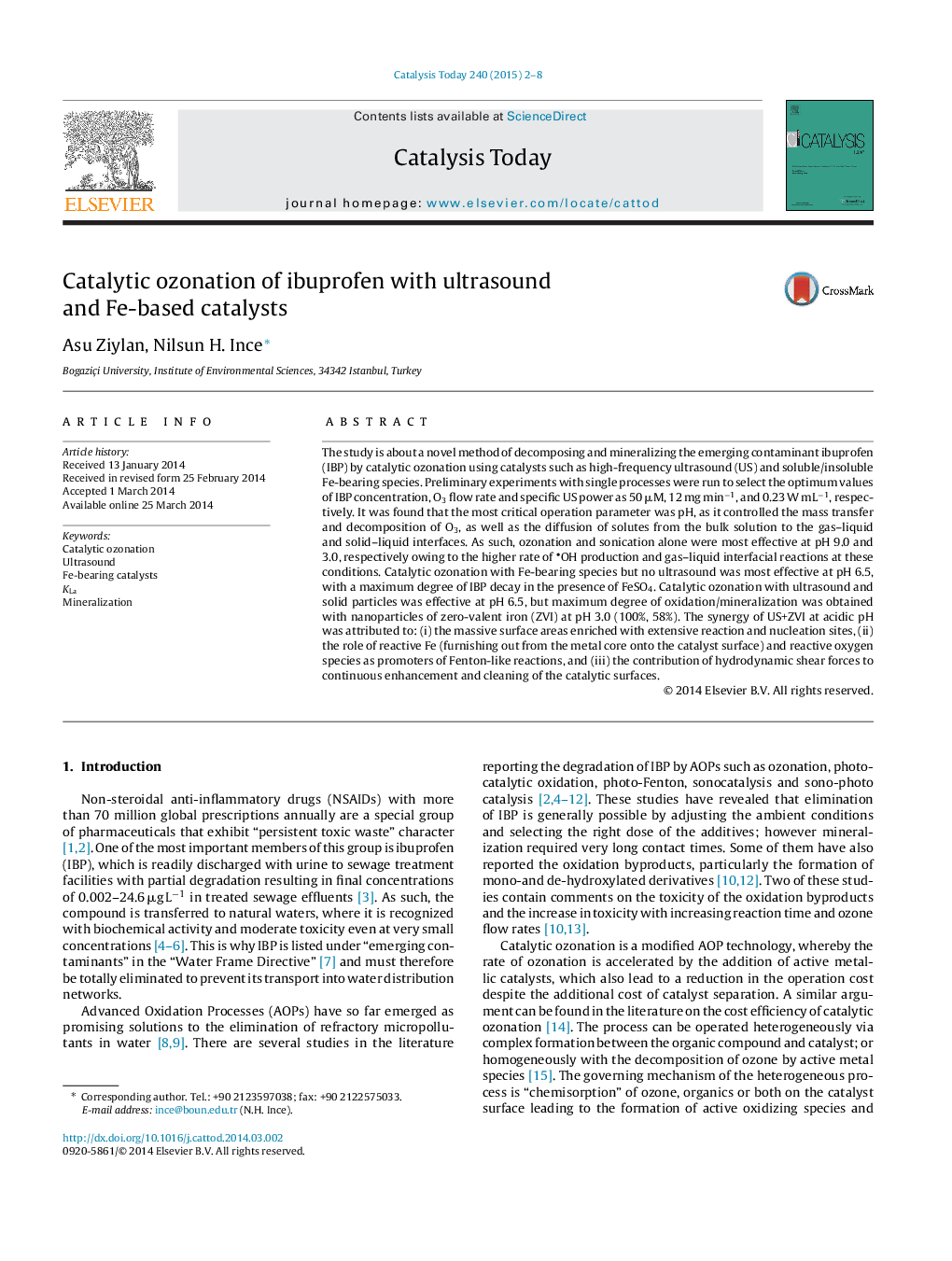| کد مقاله | کد نشریه | سال انتشار | مقاله انگلیسی | نسخه تمام متن |
|---|---|---|---|---|
| 54420 | 47009 | 2015 | 7 صفحه PDF | دانلود رایگان |

• O3 alone is effective for IBP elimination at pH 9, but not for mineralization.
• O3 at pH 3 is effective only in the presence of US and ZVI-graphite.
• O3+Fe2+⟶pH 6.5high IBP degradation, O3+ZVI-nano⟶pH 6.5high mineralization..
• O3 + US provides excess HO; most effective at pH 3.
• O3 + solids + US: O3 reactions with Fe-active surfaces, excess HO, improved surface.
The study is about a novel method of decomposing and mineralizing the emerging contaminant ibuprofen (IBP) by catalytic ozonation using catalysts such as high-frequency ultrasound (US) and soluble/insoluble Fe-bearing species. Preliminary experiments with single processes were run to select the optimum values of IBP concentration, O3 flow rate and specific US power as 50 μM, 12 mg min−1, and 0.23 W mL−1, respectively. It was found that the most critical operation parameter was pH, as it controlled the mass transfer and decomposition of O3, as well as the diffusion of solutes from the bulk solution to the gas–liquid and solid–liquid interfaces. As such, ozonation and sonication alone were most effective at pH 9.0 and 3.0, respectively owing to the higher rate of OH production and gas–liquid interfacial reactions at these conditions. Catalytic ozonation with Fe-bearing species but no ultrasound was most effective at pH 6.5, with a maximum degree of IBP decay in the presence of FeSO4. Catalytic ozonation with ultrasound and solid particles was effective at pH 6.5, but maximum degree of oxidation/mineralization was obtained with nanoparticles of zero-valent iron (ZVI) at pH 3.0 (100%, 58%). The synergy of US+ZVI at acidic pH was attributed to: (i) the massive surface areas enriched with extensive reaction and nucleation sites, (ii) the role of reactive Fe (furnishing out from the metal core onto the catalyst surface) and reactive oxygen species as promoters of Fenton-like reactions, and (iii) the contribution of hydrodynamic shear forces to continuous enhancement and cleaning of the catalytic surfaces.
Figure optionsDownload high-quality image (94 K)Download as PowerPoint slide
Journal: Catalysis Today - Volume 240, Part A, 1 February 2015, Pages 2–8